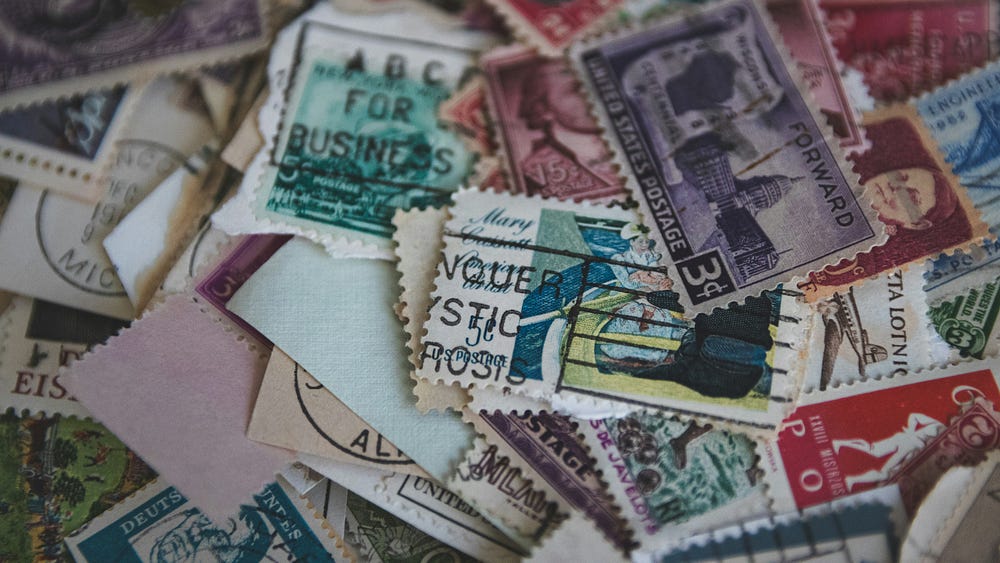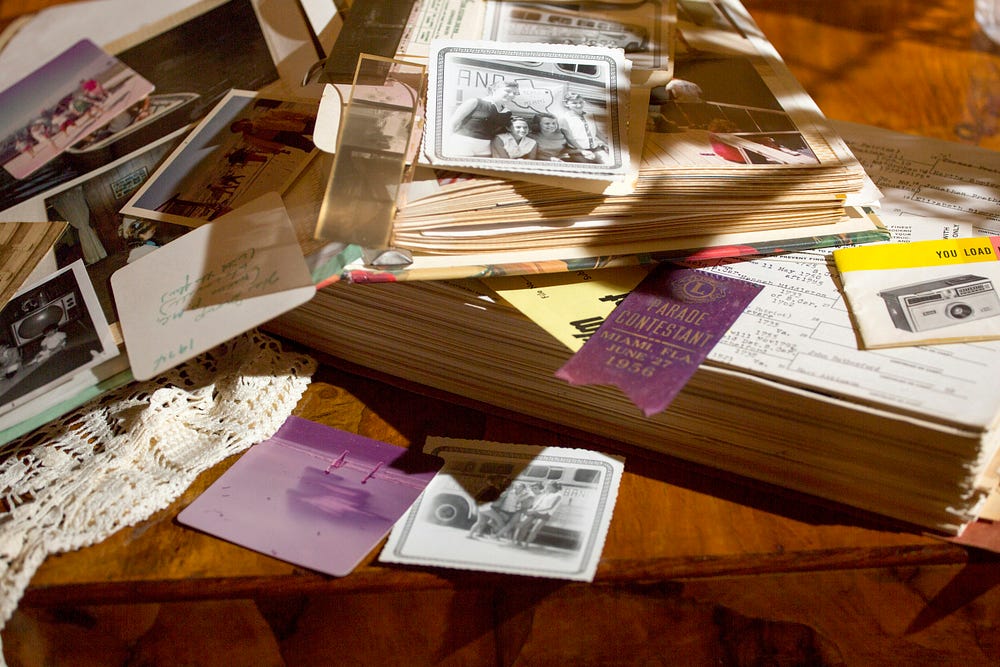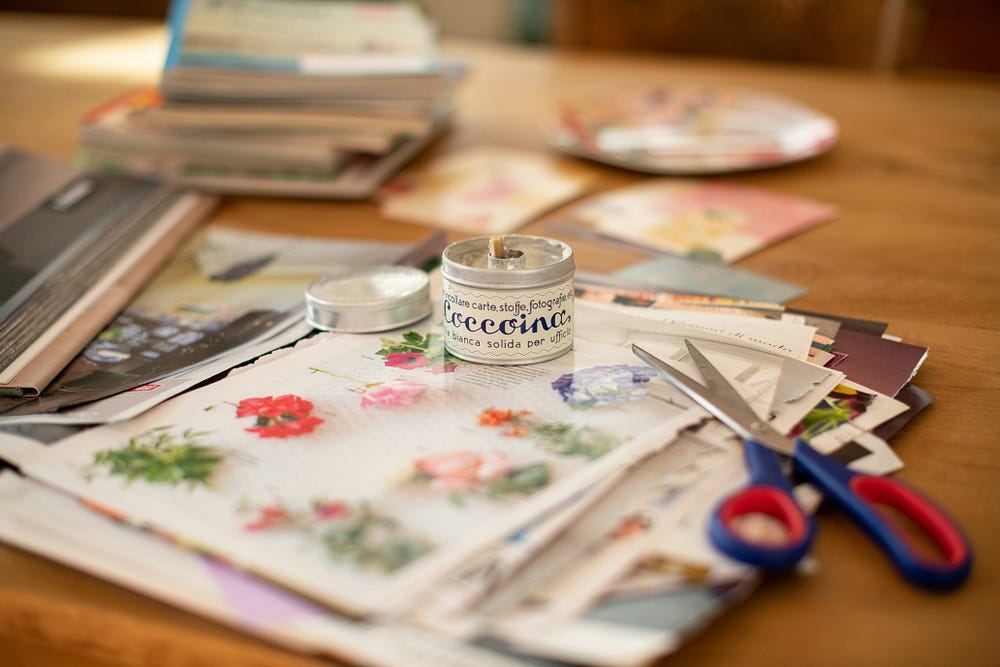Back in the day, some 10+ years ago, there was a popular prompted book called “Wreck This Journal”. Every Tumblr girlie had pictures of it, yours truly included. You can actually still get the book on Amazon (not affiliate, just think it’s cool that it still exists).
So what does this have to do with junk journaling? The two are quite similar, really, at least conceptually. It’s about using mixed media and exploring your creativity with reckless abandon.
In this article, I’ll share some of my experimental mixed media journal pages, and I’ll provide you with valuable tips and tricks to help you get started on your junk journaling journey. Hopefully, these insights will help you in creating stunning and meaningful spreads filled with memories, creativity, and self-expression.
Key Takeaways:
- Exploring the concept of junk journaling as a unique form of mixed media art.
- Learn valuable tips and tricks for beginners to kickstart your junk journaling adventure.
- How to select the right materials and set up a dedicated workspace.
- Mixed media techniques and layout ideas to bring your junk journal pages to life.
- How to add personal touches and meaningful elements to make your journals truly unique.
Junk Journaling 101: What Is It, How to Do It, Where to Start?

As I’ve already discussed before, journaling is a method of memory preservation and self-expression that even has proven mental health benefits.
Junk journaling specifically is a method that is nothing new, however, it has become more mainstream in the past couple of years. It’s a fascinating art form that combines various elements and materials to create unique and personalized journals. This distinctive mixed media craft is the perfect playground for creativity while also preserving your memories and emotions.
Unlike traditional journals, junk journals are not limited to plain pages filled with written words. Instead, you can go wild and combine all sorts of objects and, well, junk to create your spreads.
Vintage papers, fabric scraps, ephemera, and found objects can all be carefully curated and artfully arranged in a junk journal.
What I like about this journaling method is the opportunity to create visually captivating pages while at the same time allowing space to make a mess. It is a form of self-expression that goes beyond simply writing. Tap into your artistic side and communicate your thoughts through a combination of words, images, and textures.
This technique is like an antidote to journaling perfectionism. If you are like me and squirm at any tiny “mistake”, a junk journal can be the perfect outlet to accept the beauty of imperfections. The result is a journal that not only serves as a creative outlet but also becomes a cherished piece of art.
“Junk journaling is a beautiful way to explore your creativity and preserve your memories in a tangible and visually captivating form.”
The process of gathering materials, collaging, and designing unique layouts is both therapeutic and fulfilling. In and of itself the collection of supplies can be a form of adventure and storytelling to remember. It allows you to immerse yourself in the present moment and create something truly extraordinary.
Here’s a quick overview of the benefits, techniques, and common supplies you can use for junk journaling:
| Benefits of Junk Journaling | Techniques and Layout Ideas | Supplies for Junk Journaling |
|---|---|---|
| – Provides stress relief – Fosters self-expression – Preserves memories and experiences |
– Collage – Stamping – Stenciling – Writing |
– Vintage papers – Fabric scraps – Ephemera – Found objects |
Getting Started with Junk Journaling

Okay, let’s get into some practical tips. Here are some essential steps to get started on your junk journaling adventure:
Selecting materials
First, you need your journaling notebook. It doesn’t have to be anything fancy, in fact, it probably should be too expensive because you’ll most likely feel bad about destroying it in various ways :D. So pick a decent notebook you’ll like and won’t spare, then start gathering a variety of materials that inspire you. You can start with something on the “safe” side: vintage papers, fabric scraps, ephemera, old book pages, stationary, and found objects to add character and texture to your spreads. Get creative and experiment with different combinations to create unique and personalized pages.
Setting up your workspace (outside!)
Having a dedicated workspace is helpful for smooth and enjoyable junk journaling sessions. But the cool thing is that your workspace can be outdoors! Get out there and collect some natural materials such as leaves and sticks. I also like collecting and pressing flowers, which can look incredible and vibrant after years of careful preservation.
Find a well-lit and comfortable space where you can spread out your materials and work without interruptions. Organize your supplies in a way that is easily accessible and conducive to your creative process. This will help you stay focused and make the most of your journaling time.
Organizing supplies
Are you a stationary hoarder? Don’t lie now, this is a safe space :D. To make the most of your junk journaling experience, it’s important to keep your supplies organized. Use containers, shelves, or drawers to categorize and store your materials. You can use clear pouches or labeled bins to easily store and locate specific items when you need them.
💡 Pro Tip: Don’t be afraid to repurpose items you already have. Old greeting cards, packaging materials, and scraps of fabric can find new life in your junk journals.
| Materials | Workspace | Storage |
|---|---|---|
| Vintage papers | Well-lit area | Containers |
| Fabric scraps | Comfortable space | Shelves |
| Ephemera | Organized layout | Drawers |
| Old book pages | Clear pouches | |
| Found objects | Labeled bins |
Collecting and Gathering Materials

This part of the process can be just as, if not more satisfying than the creation itself.
When it comes to junk journaling, the materials you choose to include can greatly enhance the overall aesthetic and personalization of your notebook. Don’t know what to start with? Here are some suggestions for different types of materials that you can easily find in your immediate environment right now:
Vintage papers
Think of junk journaling as scrapbooking’s chaotic sibling. One of the key elements in decorating both is incorporating vintage papers. These can include old book pages, sheet music, handwritten letters, and vintage postcards. Look around your home for an old newspaper or magazine that you can use for your experiments to start with. Old paper cutouts can add a nostalgic and unique charm to your journal.
Fabric scraps
Don’t limit yourself to paper alone! Consider including fabric scraps in your junk journal. Use small pieces of fabric, lace, or doilies to create texture and visual interest. You can even repurpose old clothing or linens to give your journal a more feminine touch.
Ephemera
Ephemera refers to small, paper-based items that are meant to be transient, such as tickets, labels, and receipts. There are plenty of places online to find such materials. Personally, I like buying collections of these in bulk. It’s super cheap and they last me for months, sometimes even years at a time. Ephemeral pieces can add depth and character to your journal pages. Other than buying pre-made stickers, you can collect them from your daily life or search antique stores and flea markets for vintage items with a unique story to tell.
Found objects
Okay, this is where things get a bit crazy. Take your junk journaling to the next level by incorporating found objects into your creations. These can include items like buttons, charms, feathers, and pressed flowers. I’ve experimented with using stationary in the past such as paperclips and sticky notes. The possibilities are endless, and these little treasures can add a whimsical and playful element to your journal.
💡 Here are a couple of tips:
- Visit flea markets, thrift stores, and antique shops to find vintage papers, fabric scraps, and ephemera. You never know what hidden gems you may discover!
- Consider joining online communities or social media groups dedicated to junk journaling. Members often share tips and resources for finding unique materials.
Techniques and Layout Ideas

When it comes to junk journaling, the possibilities are endless. With various techniques and layout ideas, you can create unique and artistic journals that truly reflect your personal style. Let’s explore some techniques and layout ideas to inspire your creativity!
1. Collage
Collage is a popular technique in journaling in general. It allows us to combine different images, papers, and other elements to create visually intriguing pages. Cut out pictures from old magazines, incorporate vintage postcards, or even use fabric scraps to add texture and interest to your journal.
2. Stamping
Stamping is a versatile technique that adds decorative elements and patterns to your journal. Use rubber or clear stamps and apply ink to create unique designs on your pages. Experiment with different ink colors and stamp sizes to achieve the desired look.
3. Stenciling
Stenciling is another great way to incorporate design elements into your junk journal. Use stencils with various shapes and patterns, along with acrylic paints or spray inks, to add visually appealing backgrounds or focal points to your pages.
4. Journaling
Writing is an essential component of journaling, I mean, it’s kind of the main point. 🙂 So you can’t skip out on it entirely. It’s the number one way to express your thoughts, feelings, and memories. But for junk journaling, you don’t have to write as much as you usually would in a regular diary. Pen down your daily reflections, quotes, or snippets of poetry on your pages. Experiment with different handwriting styles or use typewriters and vintage-looking fonts to add character to your journal.
Layout Ideas
Now that we’ve covered some common techniques, let’s look into useful layout ideas that can enhance the visual appeal of your junk journal:
- Use a grid-like structure to organize your pages, creating a cohesive and balanced look.
- Create interactive elements, such as flip-up tabs or pockets, where you can tuck in photos, notes, or other small mementos.
- Layer different materials and textures to add depth and dimension to your pages.
- Experiment with asymmetrical layouts to create a sense of visual interest and movement.
Adding Personal Touches

When it comes to junk journaling, adding personal touches is key to creating a truly unique and meaningful journal. Of course, there’s nothing wrong with taking inspiration from what you’ve seen online. But by customizing your journal with photos, handwritten notes, and other meaningful elements, you can infuse it with your own personality and memories. Let me give you some additional tips on how to further personalize your notebook:
1. Include your favorite photos
One of my ways to personalize journals is by including my favorite photos. I have an Instax Fujifilm Polaroid camera and love including photos from my adventures in my journaling spreads. Whether it’s pictures of loved ones, memorable travel moments, or snapshots of your pets, adding photos can evoke nostalgia and it’ll always make you smile whenever you flip through the notebook. You can also print your photos and glue them directly onto the pages or create small photo pockets to hold them securely.
2. Write handwritten notes
Handwritten notes have a special charm that digital text can’t replicate. Take some time to write down your thoughts, reflections, or quotes that resonate with you, it’s still a journal after all. You can use decorative pens, markers, or even calligraphy to make your notes visually appealing. Don’t worry about perfection—your handwriting adds a layer of authenticity that cannot be replicated.
3. Incorporate meaningful quotes
“The best thing about memories is making them.”
“Every picture tells a story.”
“In the end, we only regret the chances we didn’t take.”
These are incredibly basic, but they’re only a handful of examples you can include in your junk journal spreads. Inspiring quotes can provide a sense of direction, motivation, or emotional connection to your diary logs. Choose quotes that resonate with you or relate to the memories you’re documenting. Pinterest is always a fantastic place to find inspiration for that. You can handwrite them, use decorative stickers, or even print them out and add them as ephemera to your pages.
4. Use found objects
Found objects add a touch of whimsy and uniqueness to your journal. These could be items you stumble upon during your walks, such as pressed flowers, interesting feathers, or vintage postcards. Secure these objects onto your pages using washi tape, glue, or small pockets to give your journal a tactile element.
5. Incorporate memorabilia
Memorabilia such as movie tickets, concert stubs, and event programs hold sentimental value and serve as amazing reminders of cherished memories. I always include these items in my journals by attaching them with adhesive pockets in the back or with decorative paperclips. They will not only add a personal touch but also transport you back to those special moments.
Remember, junk journaling is all about self-expression and creating something that is uniquely yours. Adding personal touches enhances the sentimental value and makes your junk journal a treasured keepsake. So, let your creativity flow and have fun as you infuse your journal with your own personal flair!
| Benefits of Adding Personal Touches | Examples |
|---|---|
| 1. Makes the junk journal uniquely yours | Photos, handwritten notes, and quotes |
| 2. Evokes nostalgia and emotional connection | Memorabilia, found objects |
| 3. Makes the journal unique and meaningful | Personalized art, creative techniques |
| 4. Enhances the self-expression aspect of junk journaling | Collage, mixed media elements |
Benefits of Junk Journaling

When it comes to creative outlets, junk journaling offers a plethora of benefits that go beyond just crafting a beautiful journal. Engaging in this unique form of mixed media art can have a positive impact on your mental well-being, self-expression, and cherished memories. Let’s explore some of the key benefits:
1. Stress relief
I’ve covered some of the benefits of journaling in a previous article, but all of those apply here as well. Immersing yourself in the practice of junk journaling provides a much-needed escape from the stresses of daily life. The process of gathering materials, creating collages, and expressing your thoughts on paper can be incredibly relaxing and therapeutic. It allows you to switch off from the noise of the outside world and focus solely on your creativity.
2. Self-expression
Junk journaling is the perfect platform for self-expression. Whether you’re incorporating personal photographs, handwritten notes, or meaningful quotes, each page of your journal becomes a reflection of your unique identity and experiences. It allows you to express yourself freely and authentically, without judgment or limitations.
3. Preserving memories
Junk journals are not just artistic creations but also valuable repositories of memories. This little notebook can preserve precious moments and create a tangible memory keepsake. Flipping through the pages of your journal years later feels like a nostalgic journey down memory lane, that always evokes emotions and reminds you of cherished moments.
“Junk journaling allows us to escape the chaos, express our true selves, and capture treasured memories.”
Conclusion
I hope this was a digestible and easy-to-follow introduction to the concept of junk journaling. It’s nothing scary or intimidating, in fact, it can be quite a liberating daily practice. Gathering the right materials and exploring various techniques are both relaxing and joyful creative outlets.
Junk journaling is not just about creating beautiful journals; it is also a form of reckless self-expression and a way to preserve memories. It’s journaling without allowing the perfectionist tendencies to take over.
So, whether you are a complete beginner at journaling or just looking to experiment with a different technique, why not give junk journaling a try? Get out there and gather your materials, set up your workspace, and let your creativity flow!
Featured image: Photo by Shifa Sarguru on Unsplash

